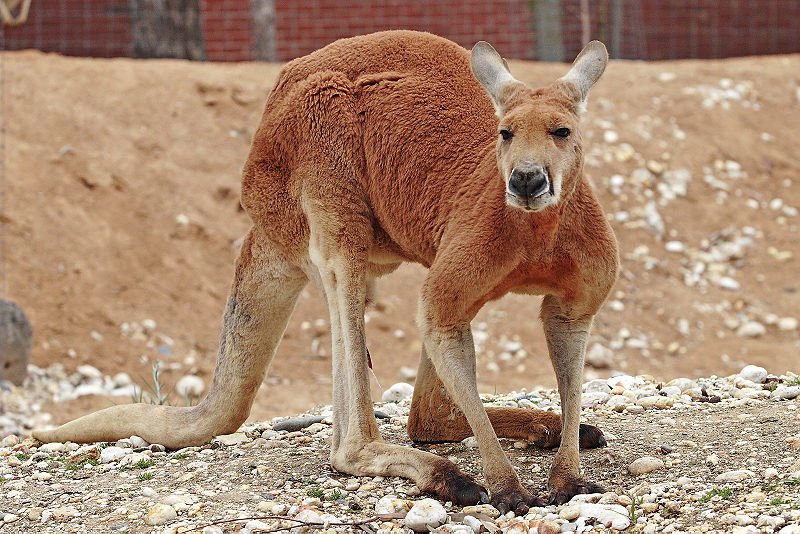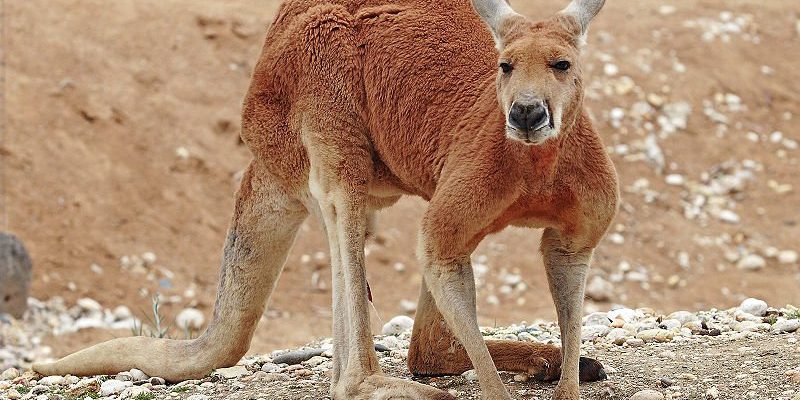
To answer whether the red kangaroo is endangered, we need to understand its population status, the threats it faces, and the efforts being made to protect it. It’s a bit like checking on a friend who seems to be going through a tough time. You want to know how they’re holding up, what’s bothering them, and if there’s something you can do to help. In this case, it’s all about finding ways to ensure red kangaroos thrive in their natural habitat.
Understanding Red Kangaroo Population Trends
The red kangaroo, scientifically known as *Macropus rufus*, is the largest of all kangaroo species. These magnificent creatures can grow up to 6 feet tall, with muscular bodies designed for powerful jumps across the Australian outback. Despite their impressive size, the red kangaroo isn’t currently classified as endangered. In fact, it’s considered a species of “least concern” by the International Union for Conservation of Nature (IUCN).
However, this status doesn’t paint the full picture. Recent studies show that their populations can fluctuate dramatically due to various factors, including droughts and habitat loss. For instance, during wet seasons, red kangaroo numbers tend to spike. Conversely, when drought strikes, food and water become scarce, leading to declines. So, while they aren’t endangered, their population is still vulnerable to changing environmental conditions.
It’s also worth noting that red kangaroos have adapted remarkably well to human presence. They often make their homes in agricultural areas, where they can find food. This adaptability is a double-edged sword; it helps them survive, but it also brings them into conflict with farmers and land developers.
Threats to Red Kangaroo Populations
Despite their resilient nature, red kangaroos face several threats which could impact their long-term survival. One significant factor is habitat loss. As urbanization expands, the outback gets smaller, forcing kangaroos into smaller, less suitable areas.
Here are some key threats:
- Urban Development: Expanding cities and infrastructure projects can eliminate vital habitats.
- Agricultural Practices: Land clearing for farming disrupts their natural environment and reduces available forage.
- Drought: Australia is prone to extreme weather, and prolonged dry spells can deplete food and water sources.
Let’s not forget about road accidents; they’re frequent in rural areas where kangaroos cross roads. Sadly, this results in injuries and fatalities for both the animals and motorists. It’s a harsh reality that underscores the need for awareness and protective measures.
Conservation Efforts for Red Kangaroos
So, what can be done to help ensure the red kangaroo continues to thrive? Luckily, there are various conservation initiatives underway. Local governments and wildlife organizations are taking steps to protect these iconic creatures through habitat preservation and restoration projects.
Here’s what’s happening:
- Protected Areas: National parks and reserves provide safe havens where kangaroos can roam without the threat of human interference.
- Research Programs: Scientists are studying kangaroo populations to better understand their needs and monitor changes over time.
- Public Awareness: Educational campaigns raise awareness about the importance of red kangaroos and promote coexistence with humans.
The collaboration between government bodies, conservation groups, and the public is crucial for these efforts. After all, protecting wildlife is a shared responsibility. When we come together, it’s like joining forces to solve a complex puzzle, ensuring everyone benefits.
The Role of Indigenous Knowledge
Indigenous Australians have long understood the importance of kangaroos to the land and culture. Their traditional ecological knowledge provides valuable insights into sustainable practices and conservation strategies.
Involving Aboriginal and Torres Strait Islander communities in conservation efforts can make a big difference. Here’s how their knowledge impacts red kangaroo conservation:
- Land Management: Indigenous practices often prioritize biodiversity and ecosystem health.
- Storytelling: Sharing cultural stories creates emotional connections to kangaroos, encouraging community involvement.
- Monitoring Ecosystems: Indigenous groups can offer localized knowledge that enhances scientific understanding and management strategies.
By integrating these perspectives, we can build a more holistic approach to conservation. It’s like inviting everyone to the table, where every voice contributes to the bigger picture.
How You Can Help
You might be wondering, “What can I do to help the red kangaroo?” Honestly, there are simple actions that anyone can take, no matter where you live. Here are a few ideas:
- Spread Awareness: Share information about kangaroo conservation with your friends and family. The more people know, the better!
- Support Conservation Organizations: Consider donating to wildlife organizations that focus on protecting kangaroos and their habitats.
- Be Mindful of Wildlife: If you’re in areas where kangaroos are present, drive with caution to avoid accidents.
Even small steps can make a difference. It’s all about fostering a sense of community commitment to wildlife conservation.
While the red kangaroo isn’t currently endangered, the challenges it faces shouldn’t be overlooked. As climate change, habitat loss, and human activities continue to impact their populations, it’s crucial that we stay vigilant. Just like checking in on our friends, caring for kangaroos requires ongoing effort and support.
The good news is that we have the means to protect red kangaroos, ensuring they continue to bounce across the Australian landscape for years to come. With collective action, knowledge sharing, and respect for nature, we can help maintain the delicate balance that allows these remarkable creatures to thrive. After all, we all share this planet, and protecting its beauty is a responsibility we should embrace together.

